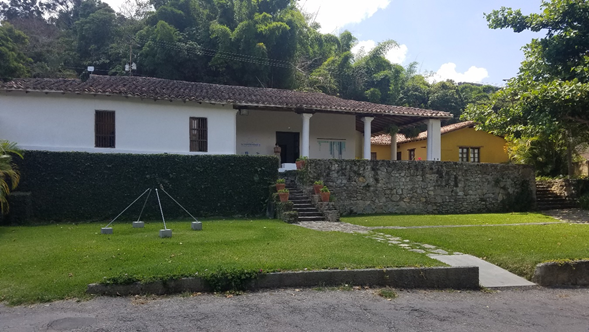
At the invitation of an artist and former graduate student of the Central University of Venezuela, I attended this Sunday, October 17, an exhibition that was held in a museum that I had heard of, but was not physically aware of. It is a bucolic place in the Sorocaima urbanization, in Trinidad, south-east of Caracas, where there is an architectural-cultural jewel called “Centro Cultural Hacienda la Trinidad”, which has a series of titles to its credit: museum , cultural center, cultural heritage, historical place, old farm; The truth is that all these titles are left aside when one is within the facilities of this place full of architectural beauty, exuberant nature, ideal climate, bulk art and an environment where the meeting with friends, acquaintances and artists fills the spirit of joy and rejoicing. Today I want to share with you, dear friends and readers of this community, lovers of architecture, design and art, this little writing, as well as the photos I took while I was delighted with the unique beauties of the place.
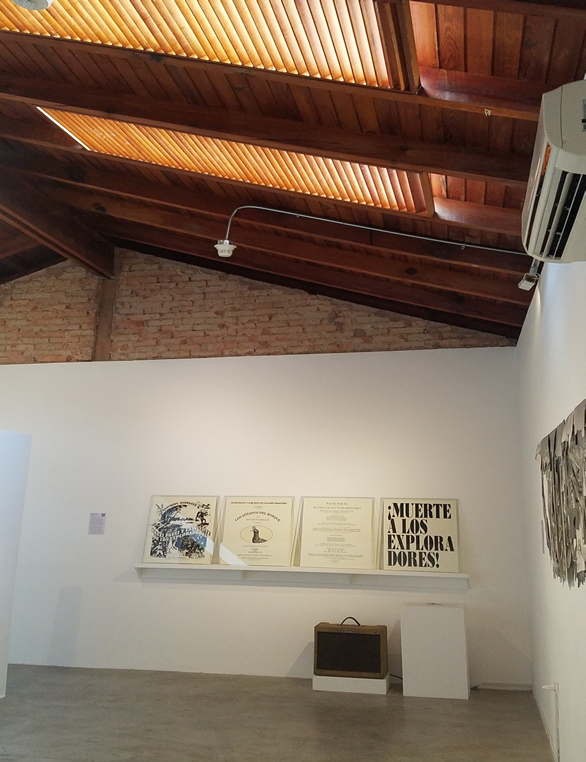
The lands that make up the Cultural Center were used as crops in the colonial era, in times of the “Capitanía General de Venezuela”, back in the 18th century. Originally it was a wheat farm, later it became a coffee and sugar cane plantation, for which, a mill was built to process sugar cane and produce molasses and paper, to which tobacco sowing was added, in 1945, that merited the construction of brick dryers.

In the 20th century, in the 60s, the Dutch sculptor Cornelis Zitman erected a house using the remains of the Trapiche as foundations. Ten years later, iIt is decided to protect the area for its historical value, thus preventing its land from being urbanized, due to the high value of the land of the place. As of 2002 it became a Cultural Center. In 2005 the Institute of Cultural Heritage declared the area cultural heritage. In 2012, remodeling work began to create spaces for exhibitions, cultural and recreational events.
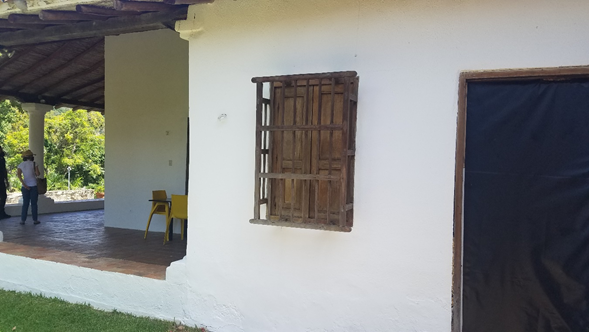
The Cultural Center is multipurpose: it has a gallery of contemporary crafts and design, the Gallery "Carmen Araujo", a cocoa shop of origin, an exhibition center, a bookstore, a photographic space called "Cubo 7", coffee shops, a restaurant and green areas where there are up to 40 plant species. At present it is used for events of various kinds. In total it has an area of 15,000 m2. It has buildings from the colonial era and structures that reflect the various agricultural uses that it had throughout history.
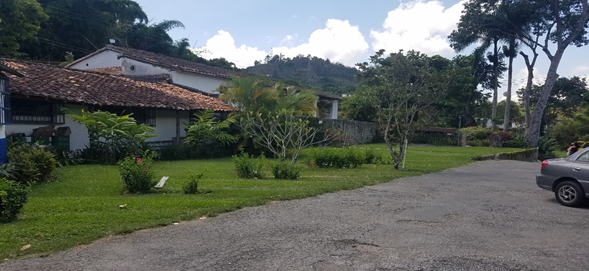
The very experienced guides of the Cultural Center give information about the events that take place, but also give relevant historical information about the Hacienda. For example, of the 2 main houses, one is the Colonial house or “Old House”, which was built in the 18th century and the house that the sculptor Zitman built, in the 20th century, for family use, in the southwest of the facilities, known as “Zitman House”, currently inhabited by his widow, where there is a sculpture studio, a drawing workshop, a library and an exhibition room. The owner built his house respecting the chimney of the sugar mill, and made use of the four walls and a hydraulic wheel that were in the place.
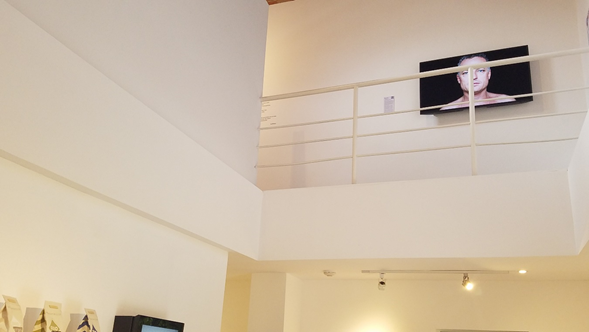
They also informed us that where the Corphus Menti Health Center works was the coffee storage center and is known as the “Casa de las Semillas”, the sugar cane was processed in the “Casa del Trapiche” and the current commercial facilities occupy the remodeled seven drying rooms where tobacco leaves were dehydrated or cured, built by the architect Bastianini.
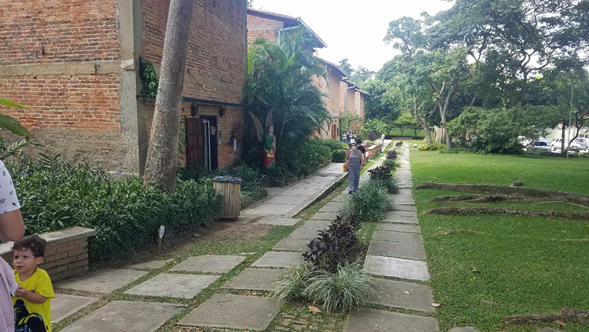
The seven dryers have brick walls in clean work, reinforced with concrete in the corners, and wooden gabled roofs covered with tile. Originally, they were solid prisms; In 2012, windows were opened to the drying rooms, as well as the construction of wooden canopies and tiles over the entrances and mezzanines inside.

Each drying room was given a different cultural or gastronomic function; Dryer 1 is a space dedicated to traditional crafts and contemporary design; the “Carmen Araujo Arte Gallery” works in dryer 2; Dryer 3 is a space dedicated to training in cultural management; in 4 there is a restaurant; the 5 is destined to a store of Cacao of national Origin; Dryer 6 is the headquarters of a bookstore and, finally, in Dryer 7, which is not connected to the other six, is “Cubo 7”, a photographic and design space.
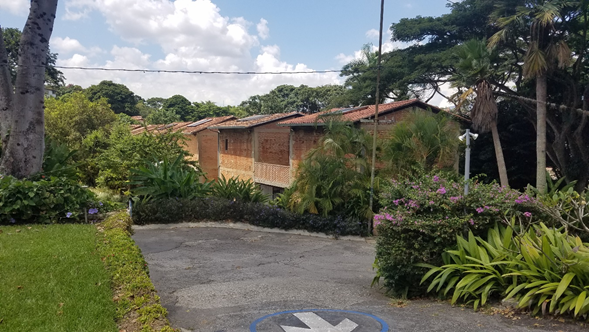
The two houses that make up the heart of the Cultural Center are: on the one hand, the "Old House", built in the 18th century, presents constructive elements such as corridors, pilasters, patios and sloping roofs with Creole tiles and, on the other hand, the "Zitman House", for private use, has corridors that give access to the master bedroom, inside you can find a sculpture studio, a drawing workshop, laundry room and two bedrooms. The place where the wheel of the trapiche is located, on the east side of one of the patios, houses the library, the exhibition room, the living room, and the work room, on a higher level than the rest of the house.
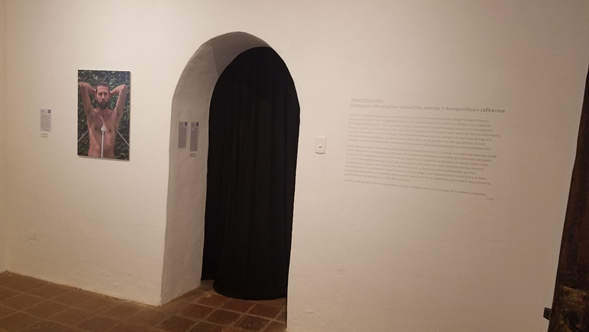
A separate chapter is made up of the green areas of the Hacienda, where you can see various forms of plant life, from the old trees of Samán and Bucare to the lilies and small herbs that grow spontaneously. According to the guides, more than 40 ornamental plant species have been classified, including fruit trees such as jobitos and yellow plums. Inside the Hacienda there are varieties of our national flower: the orchid, as well as epiphytic bromeliads.
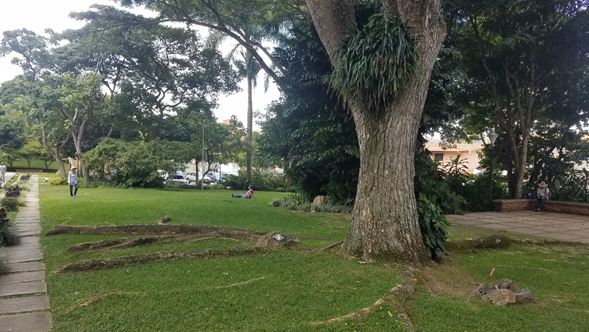
It is not easy to find a place where there is a very special synergy between Nature, architecture, history, health, art and gastronomy; Well, that is what can be enjoyed in this Cultural Center with its spaces of dynamic convergence in favor of the cultivation of the body and the spirit. We hope that this heritage space can be preserved for future generations.
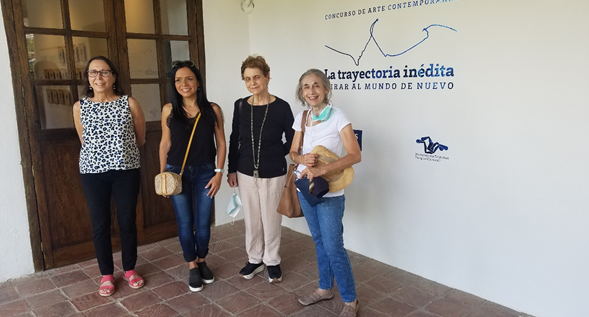
References:
*https://www.actualidad-24.com/2018/05/historia-hacienda-la-trinidad-ubicacion.html
*Hacienda la Trinidad (2016): https://iamvenezuela.com/2016/08/hacienda-la-trinidad/
*Hacienda la Trinidad Parque Cultural (2021); ¿Quiénes somos?. https://haciendalatrinidad.org/quienes-somos/
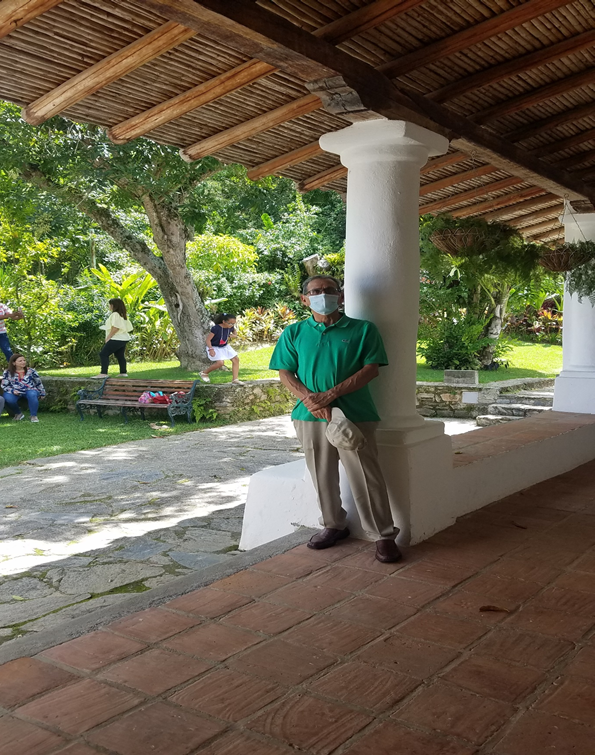
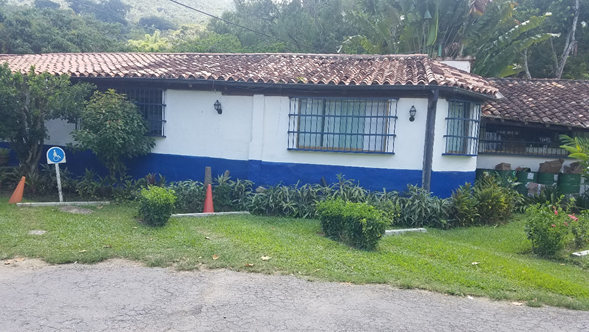
Atendiendo la invitación que me hiciera una artista y exalumna de postgrado de la Universidad Central de Venezuela, asistí este domingo 17 de octubre a una exposición que se realizaba en un museo del que había oído hablar, pero que desconocía físicamente. Se trata de un bucólico lugar de la urbanización Sorocaima, en la Trinidad, al sur-este de Caracas, donde se encuentra una joya arquitectónica-cultural denominada “Centro Cultural Hacienda la Trinidad”, que reúne una serie de títulos en su haber: museo, centro cultural, patrimonio cultural, lugar histórico, antigua hacienda; lo cierto es que todos estos títulos se quedan a un lado cuando uno se encuentra dentro de las instalaciones de este lugar lleno de hermosura arquitectónica, exuberante naturaleza, clima ideal, arte a granel y un ambiente donde el encuentro con amigos, conocidos y artistas llena el espíritu de alegría y regocijo. Quiero hoy compartir con ustedes, estimados amigos y lectores de esta comunidad, amantes de la arquitectura, el diseño y el arte, este pequeño escrito, así como las fotos que tomé mientras me deleitaba con las bellezas singulares del lugar.

Los terrenos que componen el Centro Cultural fueron utilizados como sembradíos de la época colonial, en tiempos de la Capitanía General de Venezuela, por allá por el siglo XVIII. Originalmente era una hacienda de cultivo de trigo, luego cambia a ser sembradío de café y caña de azúcar, para lo cual, se construyó un trapiche para procesar la caña de azúcar y producir melaza y papelón, a las que se agregó la siembra de tabaco, en 1945, que ameritó la construcción de secaderos de ladrillos.
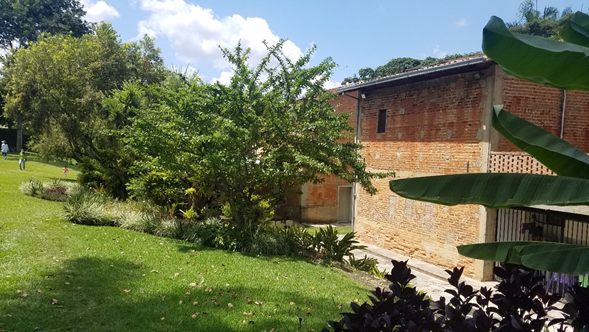
Ya en el siglo XX, en los años 60, el escultor neerlandés Cornelis Zitman erigió una casa usando como cimientos los restos del Trapiche. Diez años más tarde. se decide proteger el área por su valor histórico, evitando así que sus terrenos fueran urbanizados, por el alto valor de los terrenos del lugar. A partir del año 2002 se convirtió en un Centro Cultural. En 2005 el Instituto de Patrimonio Cultural declaró el área patrimonio cultural. En 2012 se iniciaron los trabajos de remodelación a fin de crear espacios para exposiciones, eventos culturales y recreativos.
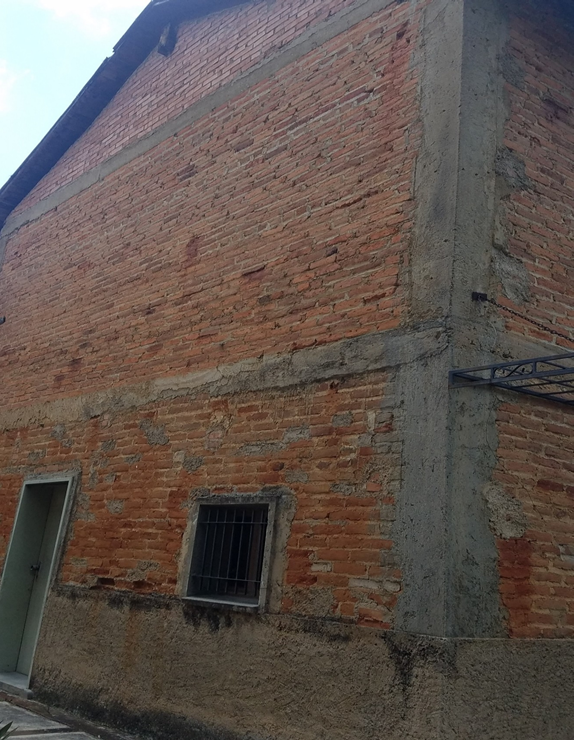
El Centro Cultural es de multiusos: posee una galería de artesanía y diseño contemporáneos, la Galería “Carmen Araujo”, una tienda de cacao de origen, un centro de exposiciones, una librería, un espacio fotográfico denominado “Cubo 7”, cafetines, un restaurante y áreas verdes donde se cuentan hasta 40 especies vegetales. En la actualidad se emplea para eventos de diversa índole. En total posee una superficie de 15.000 m2. Posee edificaciones de la época colonial y estructuras que reflejan los diversos usos agrícolas que tuvo a lo largo de la Historia.
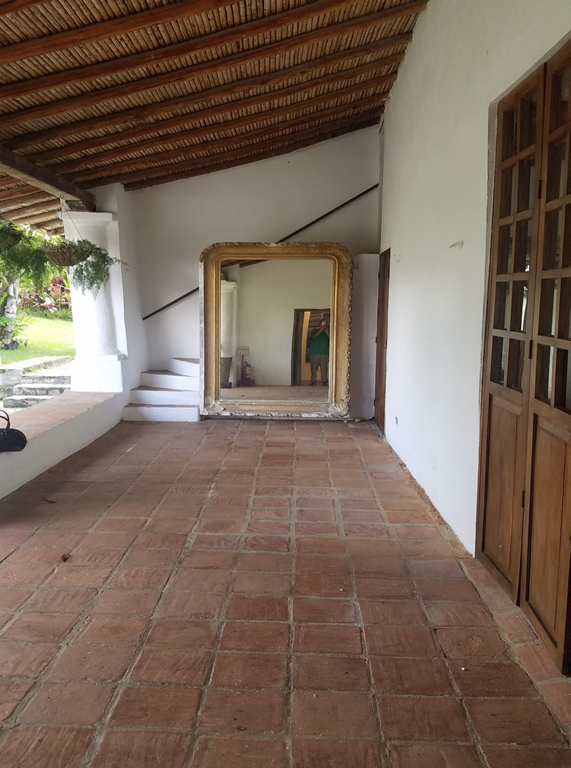
Los muy avezados guías del Centro Cultural dan información de los eventos que se realizan, pero también dan información histórica relevante de la Hacienda. Por ejemplo, de las 2 casas principales, una es la casa Colonial o “Casa Vieja”, la cual fue edificada en el siglo XVIII y la casa que construyó, en el siglo XX, el escultor Zitman, para uso familiar, en el suroeste de las instalaciones, conocida como “Casa Zitman”, actualmente habitada por su viuda, donde se encuentran un estudio de escultura, un taller de dibujo, una biblioteca y una sala de exhibición. El propietario levantó su casa respetando la chimenea del trapiche, e hizo uso de los cuatro muros y de una rueda hidráulica que se encontraban en el lugar.

También nos informaron que donde funciona el Centro de Salud Corphus Menti fue el centro de almacenamiento de café y es conocido como la “Casa de las Semillas”, la caña de azúcar se procesaba en la “Casa del Trapiche” y las instalaciones comerciales actuales ocupan los remodelados siete secaderos donde se deshidrataban o curaban las hojas de tabaco, construidos por el arquitecto Bastianini.
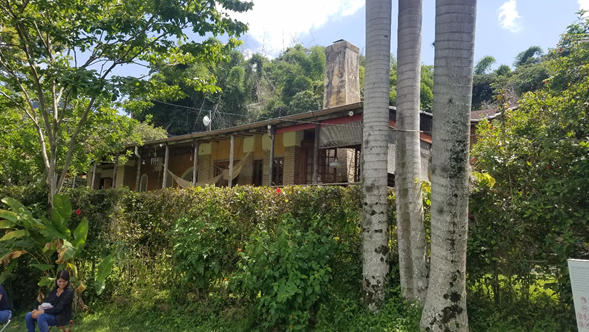
Los siete secadores poseen muros de ladrillo en obra limpia, reforzados con concreto armado en las esquinas, y techos a dos aguas de madera y cubiertos de teja. Originalmente, eran prismas macizos; en 2012 a los secaderos se les abrieron ventanas, así como la construcción de marquesinas de madera y tejas sobre los accesos y mezanines en su interior.
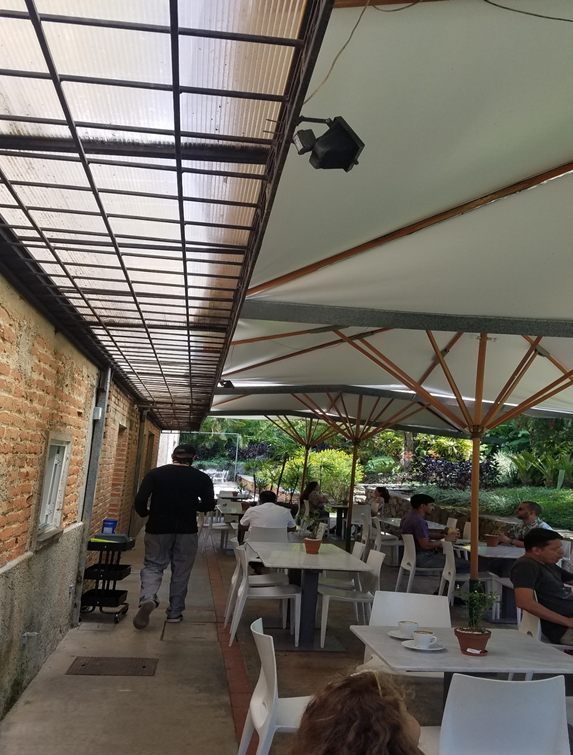
A cada secadero se le dio una función cultural o gastronómica distinta; el secadero 1 es un espacio dedicado a la artesanía tradicional y al diseño contemporáneo; en el secadero 2 funciona la Galería Carmen Araujo Arte; el secadero 3 es un espacio dedicado a la formación en gestión cultural; en el 4 funciona un restaurante; el 5 está destinado a una tienda de Cacao de Origen nacional; el secadero 6 es la sede de una librería y, por último, en el Secadero 7, que no se encuentra conectado con los otros seis, está “Cubo 7”, un espacio fotográfico y de diseño.

Las dos casas que configuran el corazón del Centro Cultural son: por una parte, la “Casa vieja”, construida en el siglo XVIII, presenta elementos constructivos como corredores, pilastras, patios y cubiertas en pendiente con teja criolla y, por otra parte, la “Casa Zitman”, de uso particular, tiene corredores que le dan acceso al dormitorio principal, en su interior se pueden encontrar un estudio de escultura, un taller de dibujo, lavandero y dos dormitorios. El lugar donde se encuentra la rueda del trapiche, al lado este de uno de los patios, alberga la biblioteca, la sala de exhibición, el estar, y el cuarto de trabajo, en un nivel superior al resto de la vivienda.
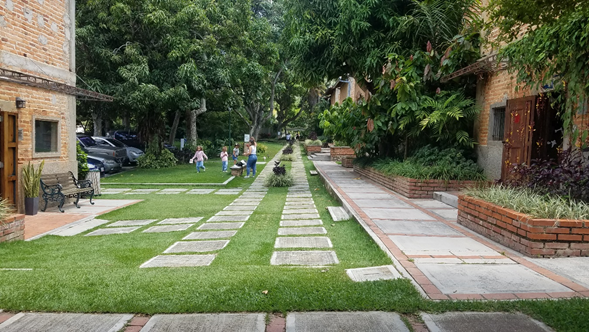
Capítulo aparte lo constituye las áreas verdes de la Hacienda, donde se pueden apreciar diversas formas de vida vegetal, desde los viejos árboles de Samán y Bucare hasta los lirios y hierbas de poco tamaño que crecen de forma espontánea. Según los guías se han clasificado más de 40 especies vegetales ornamentales, incluyendo frutales como jobitos y ciruelos amarillos. Dentro de Hacienda se observan variedades de nuestra flor nacional: la orquídea, así como bromelias epífitas.
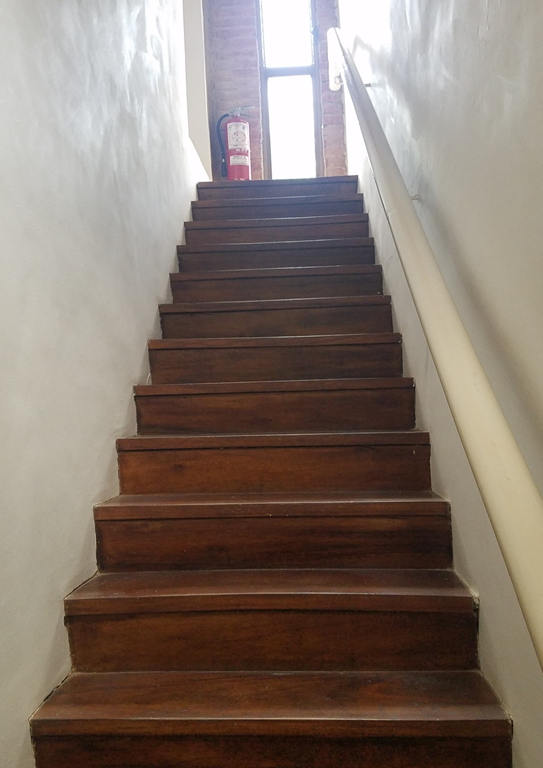
No es fácil encontrar un lugar en que se realice una sinergia muy especial entre la Naturaleza, la arquitectura, la historia, la salud, el arte y la gastronomía; pues eso es lo que se puede disfrutar en este Centro Cultural con sus espacios de dinámica convergencia en pro del cultivo del cuerpo y del espíritu. Esperamos que se pueda preservar este espacio patrimonial para las futuras generaciones.

Referencias:
*https://www.actualidad-24.com/2018/05/historia-hacienda-la-trinidad-ubicacion.html
*Hacienda la Trinidad (2016): https://iamvenezuela.com/2016/08/hacienda-la-trinidad/
*Hacienda la Trinidad Parque Cultural (2021); ¿Quiénes somos?. https://haciendalatrinidad.org/quienes-somos/
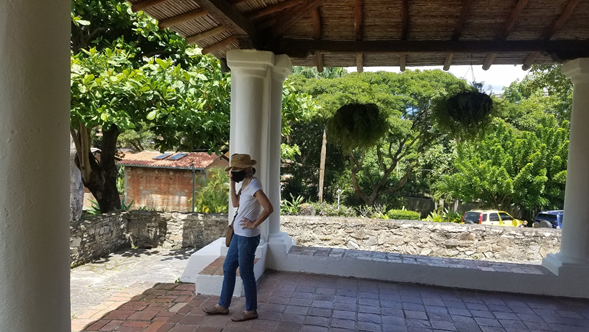

__

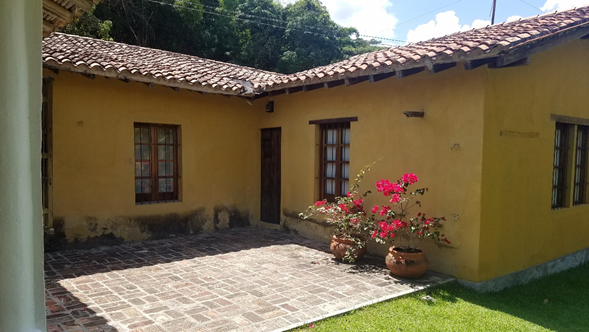
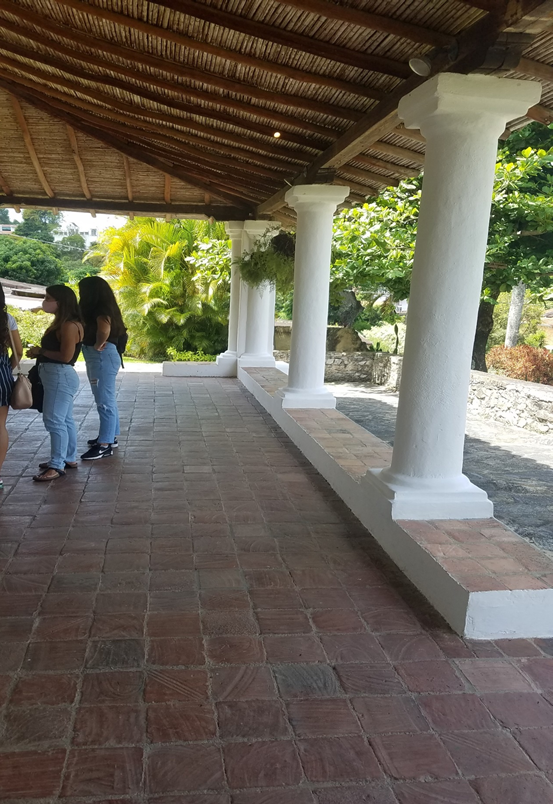
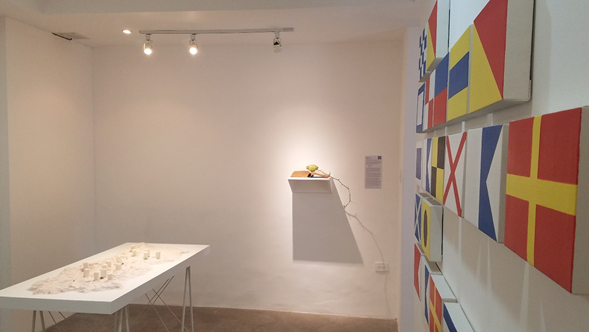

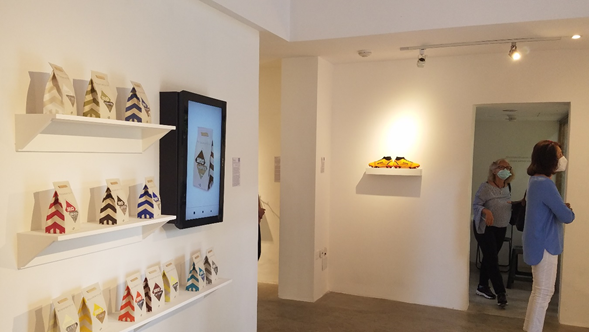
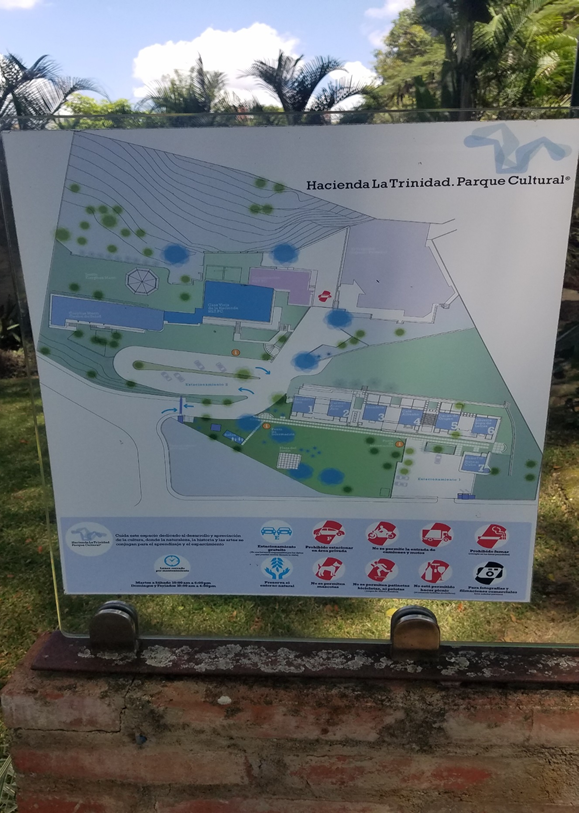
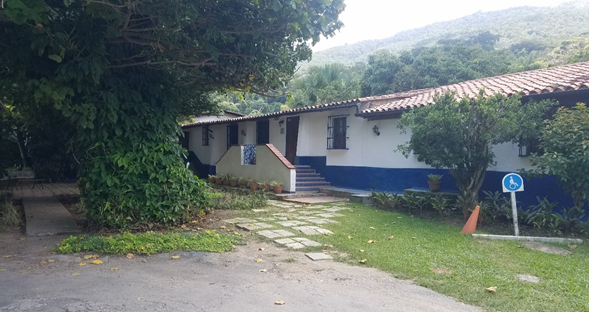
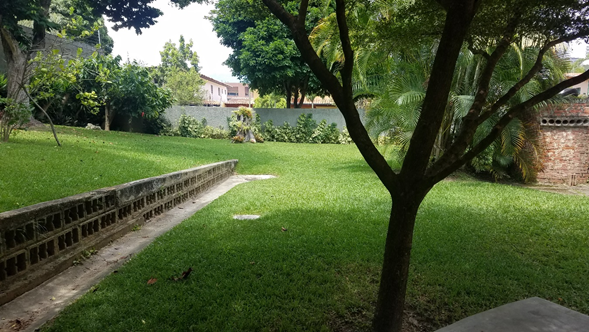
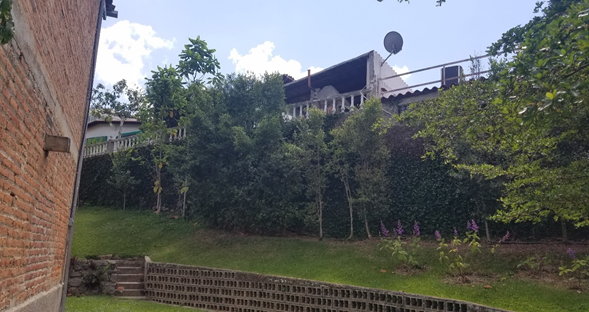
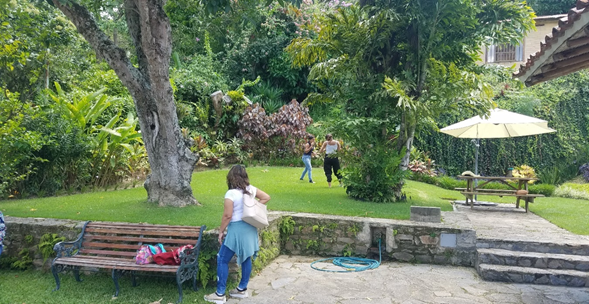
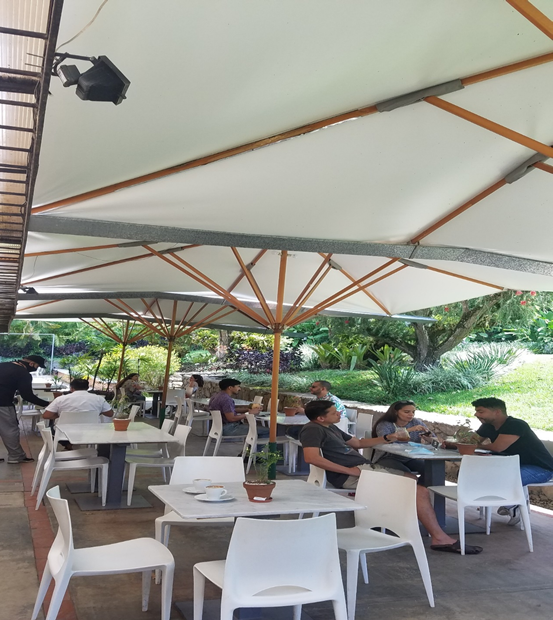
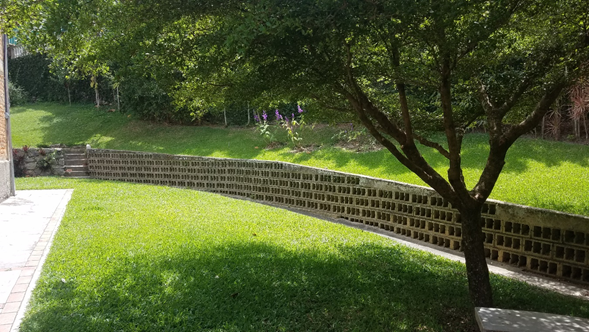
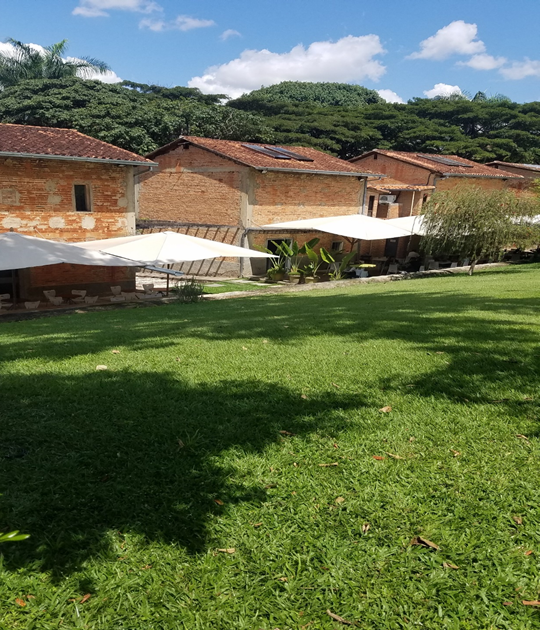
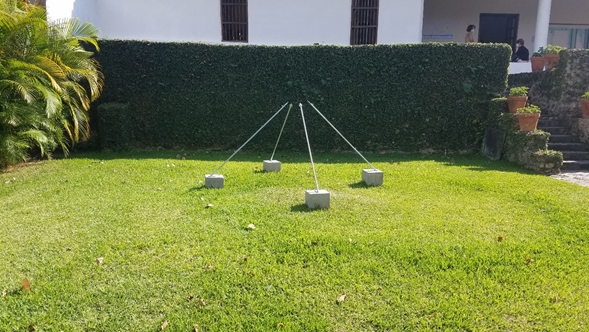
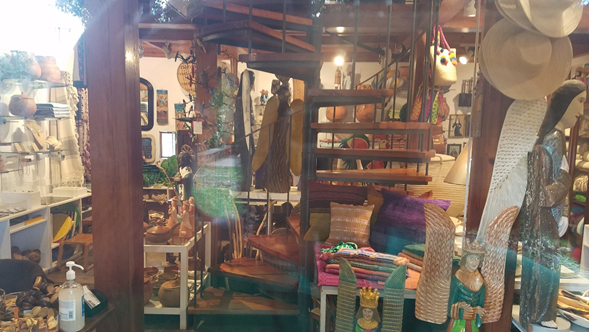
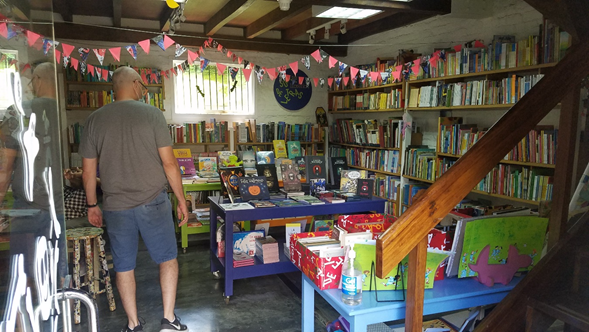

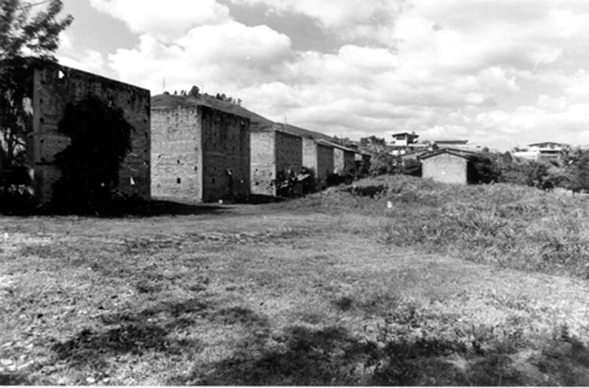
Congratulations, your post has been added to Pinmapple! 🎉🥳🍍
Did you know you have your own profile map?
And every post has their own map too!
Want to have your post on the map too?
Thanks friends for placing my post on Pinmapple. I wish you have a happy day.
The place is spacious and has a lot of greenery. I guess it is a good place to enjoy and relax. !discovery 20
Hello dear Judge. In addition to the beautiful garden that occupies a significant space in the Hacienda, there are what I show in the photos; houses-museums, workshops, small cultural shops and places to have lunch and talk. Thank you for your comment, I wish you a great day.
This post was shared and voted inside the discord by the curators team of discovery-it
Join our community! hive-193212
Discovery-it is also a Witness, vote for us here
Delegate to us for passive income. Check our 80% fee-back Program
Hello discovery-it friends, thank you very much for sharing and voting for my publication by the discovery-it curator team. I wish you a profitable and happy week
Thank you for sharing this amazing post on HIVE!
Your content got selected by our fellow curator @priyanarc & you just received a little thank you via an upvote from our non-profit curation initiative!
You will be featured in one of our recurring curation compilations and on our pinterest boards! Both are aiming to offer you a stage to widen your audience within and outside of the DIY scene of hive.
Join the official DIYHub community on HIVE and show us more of your amazing work and feel free to connect with us and other DIYers via our discord server: https://discord.gg/mY5uCfQ !
If you want to support our goal to motivate other DIY/art/music/homesteading/... creators just delegate to us and earn 100% of your curation rewards!
Stay creative & hive on!
Good morning friends of diyhub. Thank you very much for selecting the content of my post to receive a little thank you via an upvote from your non-profit curation initiative !, I hope your wish to increase my audience is fulfilled, both inside and outside the DIY scene of hive. I wish you a happy and blessed week
Hello Benjamin. Thank you for showcasing the Centro Cultural Hacienda la Trinidad, indeed a cultural center that's a beloved heritage building of Venezuela. And you couldn't have said it better with your statement above. Which aspect of that distinguished landmark had the strongest emotional connection with you and why?
Hello, good morning, dear Erne. Although I consider myself a professor of philosophy, follower of analytical currents, little friend of holism in any of its aspects, I am going to make an exception by answering you that I really do not have any particular aspect that I can affirm has strongly connected me with
some specific place on the "Centro Cultural"; I believe that. in this opportunity. my emotions joined with all aspects of this place that filled me both artistically and spiritually. Remember that I consider, subjectively, architecture as an art beyond the achievements of other types that it has accumulated over the centuries. I hope my answer satisfies you.
No worries. Because architecture and design are truly subjective topics, personal perspectives vary depending on the person. What's important was your authentic enjoyment of that place in a holistic approach. Many thanks for sharing your honest opinion. Have a splendid week!
Greetings @besamu, you must have enjoyed your visit to Centro Cultural Hacienda La Trinidad since there is the diversity of experience the hacienda has to offer, you mentioned food, I like food very much. With that being said, if I ever get to visit Caracas, I will add Centro Cultural Hacienda La Trinidad to my itenerary.
Hello afterglow, thank you for your comment. Indeed, I really enjoyed my stay at the Cultural Center from every point of view. Regarding food, I could only taste some chicken cakes, an apple strudel with vanilla ice cream and a coffee with cream. I saw the menu and I realized that the restaurant has "nouvelle cuisine" type options seasoned with typical Venezuelan ingredients, or rather Caribbean ones. If you ever come to our country, once the political conditions improve, I would recommend that you visit the place.
It seems like a wonderful center, where a person can enjoy arts and meet people and friends who share same interests. Nice post, @besamu.
Hello zorank, good morning. Indeed, the Cultural Center is a place to enjoy art and nature, and at the same time delight in a good snack with friends. Thanks for your comment.
Well done @besamu! We're happy to inform you that this publication was specially curated and awarded RUNNER-UP in Architecture Brew #45. Congratulations!
Subscribe to Architecture+Design, an OCD incubated community on the Hive blockchain.